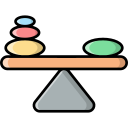
Patterns and Textures for Visual Appeal
Chosen theme: Patterns and Textures for Visual Appeal. Step into a friendly gallery of rhythm, grain, and tactile storytelling where thoughtful patterns and textures turn ordinary designs into unforgettable experiences. Share your favorite pattern inspiration and subscribe for fresh ideas every week.
Why Patterns and Textures Captivate the Eye
Repetition builds rhythm that our brains recognize quickly, creating comfort and anticipation. Even subtle variations in a pattern keep the eye engaged, balancing predictability with surprise. Tell us which repeating motif you use to make audiences feel instantly at home.



Textures in Photography and Illustration
Light, Angle, and Grit
Raking light reveals surface depth; soft light smooths it. Shoot at oblique angles to emphasize ridges and pores, or front‑light to calm them. Readers, try photographing the same surface under two lighting setups and share which supports clarity better.
Scanning the Everyday
Flatbed scanners turn everyday materials—linen, cardboard, citrus peels—into gorgeous, tileable textures. Tape edges to prevent curl and scan at high DPI for clean repeats. Post your most unexpected household texture discovery for a chance to inspire tomorrow’s palette.
Illustrated Grain and Noise
Digital grain softens vectors and adds warmth. Use restrained noise layers, halftone dots, or pencil brushes to suggest tactile reality. Keep grain direction consistent with light. Comment with your favorite brush settings for believable paper tooth in illustrations.
Patterns in UI/UX: Clarity Through Rhythm
Hierarchy with Pattern
Apply subtle background patterns to secondary areas, keeping primary content on cleaner surfaces. A faint diagonal or dot grid can separate toolbars from canvas without borders. Share a wireframe where pattern alone clarifies hierarchy, and we will analyze it together.
Micro‑Textures for Feedback
Tiny texture shifts can signal states: pressed buttons gain soft grain, disabled chips lose texture entirely, hover cards add faint fabric weave. These cues feel human and reduce cognitive load. Tell us which micro‑texture improved your product’s perceived responsiveness.
Dark Mode Considerations
In dark mode, textures should lighten gently, not brighten. Use low‑contrast noise to avoid banding and protect legibility. Test on multiple displays. Share screenshots comparing your dark and light patterns and describe which adjustments preserved mood without glare.
Branding with Texture DNA
Choose a material metaphor that suits your brand story: recycled kraft for sustainability, brushed metal for precision, velvet grain for luxury. Translate it into digital through controlled noise, shadows, and color. Invite your audience to guess the material from a cropped detail.

Accessibility and Performance for Pattern‑Rich Design
Ensure text never competes with pattern. Use solid overlays or reduce texture contrast beneath copy. Provide pattern‑free modes for users with visual sensitivity. Share your approach to testing readability across devices and diverse lighting conditions.
